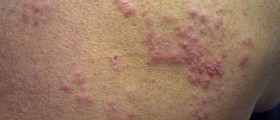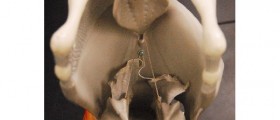
Shingles, medically known as herpes zoster, are a viral disease distinguished by a painful rash and blisters in a limited area of the skin. The blisters usually appear in a stripe, and affect only one side of the body. Shingles appear as an effect of a prior infection with the varicella zoster virus, which normally causes chickenpox. Once when the chickenpox episode is resolved, the virus stays dormant in the nerve cell bodies without causing any symptoms. However, in some patients, years or decades after a chickenpox infection, the virus may break out of the nerve cell bodies, travel down the nerve axons and cause viral infection of the skin in the region of the nerve.
Shingles in the eye
Shingles in the eye occur when the varicella zoster virus affects the nerves in the eye and skin over them. Eye shingle virus may spread from the forehead area to the upper cheeks or over eyelids. The patient may feel the pain or unusual sensations in the affected part of the body a couple of days before the rash appears. Patients usually report sensations of deep pain, itching, numbness and sensitivity to touch. The rash usually begins with clusters of red bumps which, very soon, turn into small and fluid filled blisters. The skin around the blisters is red and inflamed, causing a lot of pain, especially when touched. The eye may also become red, swollen or painful. Most of the patients are finding it difficult to look at light. The vision is blurred and the eye may water easily. In some cases, patients may have small scratches or scarring of the cornea, the upper protective transparent layer of the eye. If the scratches are present, the patient is at increased risk of developing bacterial infection in the eye. An episode of shingles usually lasts 2-4 weeks. In some cases, only rash or pain can be present.
Treatment of eye shingles
The pain and rash around the eyes can lead to permanent damage if left untreated. The episodes of shingles usually resolve on their own in a couple of weeks. The treatment is focused on easing pain and reducing possible complications. Treatment usually involves antiviral drugs and sometimes painkillers. One study conducted by Taiwanese researchers found that people who have had an attack of shingles involving the eyes may have a heightened risk of stroke for a year afterward. People who have had ophthalmic shingles should reduce their risk factors for stroke and stop smoking, keep checking their blood pressure and blood sugar if they have diabetes.

















Your thoughts on this
Loading...